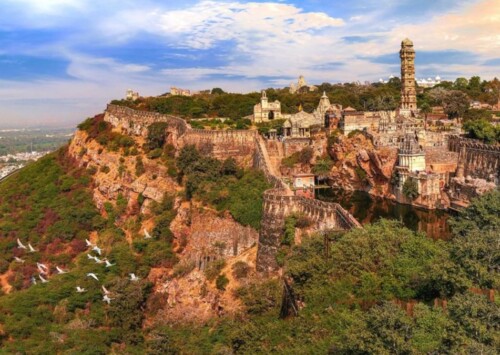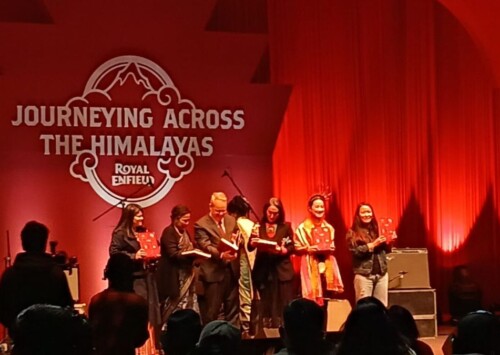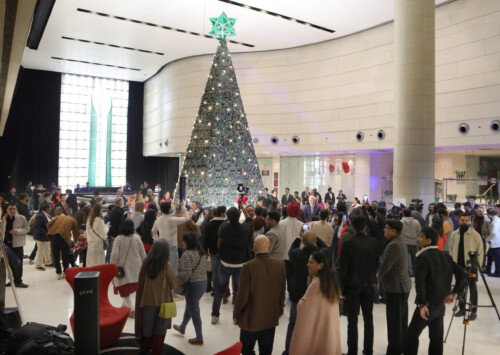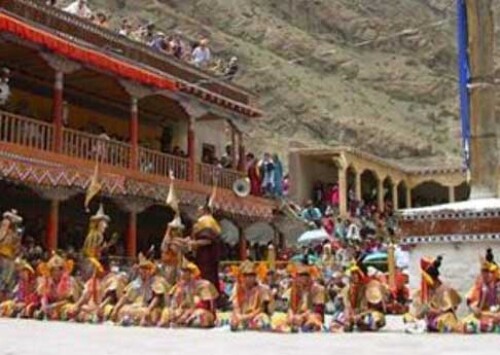Hidden strokes: India’s lesser-known art traditions
Six regions and centuries-old practices with countless stories in colour

Beyond the spotlight, there exist quieter traditions, nurtured for centuries by communities and families
From Gujarat’s oil-based Rogan to Goa’s etched Kaavi murals, explore six rare Indian art forms that blend ritual, storytelling and heritage, expressions fading in obscurity, but rich in cultural meaning.

Beyond the spotlight, there exist quieter traditions, nurtured for centuries by communities and families
India’s artistic legacy is a vast constellation, ranging from the majestic cave murals of Ajanta to the globally celebrated Madhubani paintings. Yet, beyond the spotlight, there exist quieter traditions, nurtured for centuries by communities and families, each carrying spiritual symbolism, storytelling, and a deep connection to place. Here are six such lesser-known but extraordinary art forms.
Rogan art, Gujarat: Threads of colour on fabric

Rogan painting derives from the Persian word rogan, meaning ‘oil-based’
In the arid landscape of Kutch in north-western Gujarat, Rogan art flourished as a rare craft that almost faded into oblivion. Practiced traditionally by only a few Muslim artisan families, Rogan painting derives from the Persian word rogan, meaning ‘oil-based’. The central medium is castor oil, heated and mixed with natural pigments to create a thick, jelly-like paint. With a metal stick, not a brush, the artist draws out elaborate patterns directly on dark cloth, often folding it to create perfect symmetry.
The most iconic motif in Rogan art is the Tree of Life, a design brimming with vivid flowers, birds, and spirals that reflect harmony between man and nature. Once used for bridal trousseaus or ritual cloths, today these paintings adorn wall hangings and saris.
Tholpavakoothu, Kerala: Shadows that speak

As temples in Kerala lit oil lamps at dusk, vivid tales from the Ramayana unfolded, not through dancers, but through shadows. Tholpavakoothu, literally ‘leather-puppet play’, is a ritualistic theatre tradition unique to central Kerala. The puppets, crafted from treated deer or goat hide, are perforated with delicate patterns that glow when placed against an illuminated backdrop.
Staged in temple courtyards during festivals, especially in honour of goddess Bhadrakali, the performance could last several nights, sometimes stretching to 21 continuous evenings. The puppeteers, called pulavars, undergo years of training in Sanskrit epics, music, and precise hand movements. For rural communities, the glowing shadows were once a primary medium through which religious narratives and moral lessons were internalised.
Chittara art, Karnataka: Geometries on mud walls

What distinguishes Chittara is its rhythmic geometry
In the Malnad region of Karnataka, nestled in the lush Western Ghats, the women of the Deewaru tribe practice Chittara painting. Traditionally, these designs were not meant for galleries but for mud walls, floors, and household spaces during rituals and festivals. Using colours derived from natural sources, white from rice paste, red from ground earth, and black from roasted rice, the art emphasises sustainability and organic aesthetics.
What distinguishes Chittara is its rhythmic geometry. Artists create narrative through triangles, squares, circles, and lines, symbolising fertility, harvest, and cosmic balance. Wedding rituals, for instance, are incomplete without a painted chaukki (decorative square), representing auspiciousness for the bride and groom.
Paitkar painting, Jharkhand: The scrolls of storytellers

Paitkar focusses less on grandeur and more on intimacy
Often called the scroll paintings of Jharkhand, Paitkar art is one of India’s oldest indigenous traditions. Rooted in the Santhal region, this art is closely tied to itinerant storytellers who carried painted scrolls, unravelling them panel by panel while narrating folktales, epics, or moral parables to village audiences.
The paintings use natural earth pigments, applied with raw squirrel-hair brushes onto handmade paper or cloth. Bold outlines and striking colours, often red and yellow, characterise the style. Unlike miniature schools of painting, Paitkar focusses less on grandeur and more on intimacy: human figures with large expressive eyes dominate scenes of daily life, mythology, and afterlife.
Paitkar scrolls served as visual literacy for rural audiences, blending entertainment, education, and spirituality.
Tikuli art, Bihar: From glass to canvas

The word tikuli itself means “bindi” or dot
Glossy, jewel-toned, and intricate, Tikuli art of Bihar traces its roots to ornaments once worn by women on their foreheads. The word tikuli itself means “bindi” or dot. What began centuries ago as decoration on glass surfaces has now expanded into painting on boards, canvas, and even household items, while retaining its dazzling miniature quality.
The craft once thrived in Mughal India’s bustling workshops, catering to elite urban patrons. Today artisans employ enamel paints in vibrant shades, layered to achieve a glass-like finish. The motifs carry the lyricism of Bihar’s cultural landscape such as depictions of folk festivals like Chhath Puja, images of Radha and Krishna, or idyllic village life.
Kaavi art, Goa and Konkan: Murals in terracotta red

Kaavi painting is indeed poetry etched in red earth
Across old temples and houses of Goa and coastal Konkan, walls whisper history through Kaavi art. Derived from the Sanskrit word kavi (poetry), Kaavi painting is indeed poetry etched in red earth. The technique involves etching designs onto lime plaster coated with a layer of natural laterite-red pigment. Once complete, the contrasting white motifs stand in delicate harmony with the earthy backdrop.
Unlike ephemeral graffiti, Kaavi art was meant to endure. The themes often depict deities, flora, geometric borders, and folkloric scenes, turning temple and household facades into sacred canvases. Though threatened by modern construction materials, efforts are emerging to preserve Kaavi through documentation and training.









